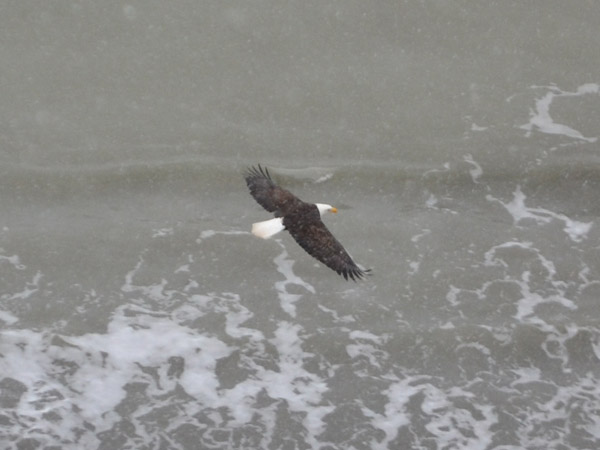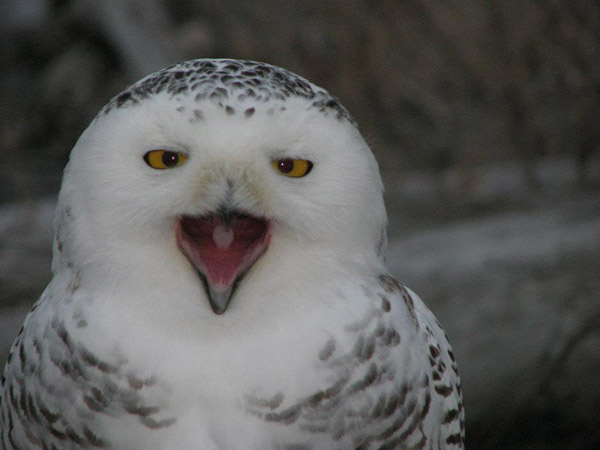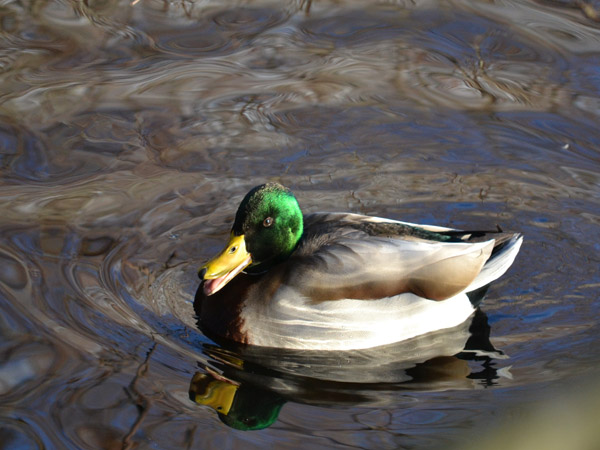I’ve seen more eagles in flight lately. One morning last week we saw five near the Dungeness bluffs and I saw another later in the day. This is an immature I saw near the Olympic Game Park near a group of trees that locals know are a good site for eagle watching. Each year an immature eagle slowly becomes more recognizable as it changes from an overall brown to the distinctive dark brown with white head and tail. This one is probably about three to four years old. The darker eye stripe is a third year trait, but the white head and tail and darker underparts may move it toward four.
I was interested to read that Ben Franklin, a respected naturalist, argued against naming the bald eagle as the U.S. national bird. He considered its scavenging of carrion and stealing fish from smaller ospreys “dishonorable.” An adult eagle will eat a lot of spawned-out salmon (carrion) but can also catch its own live prey.














